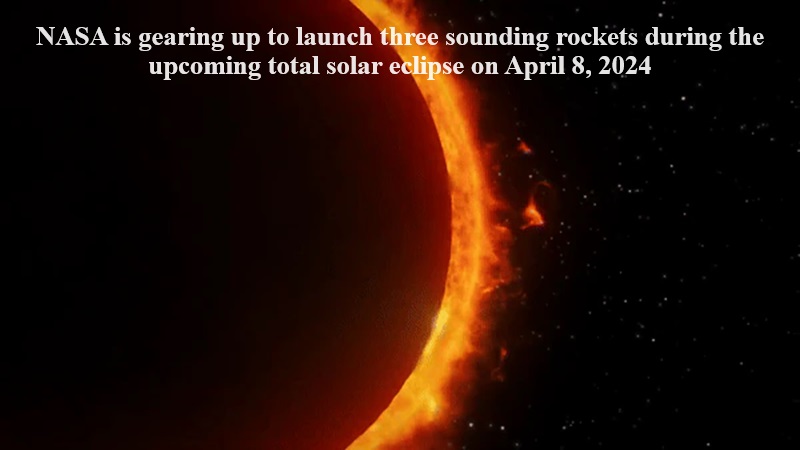
NASA is preparing to deploy three sounding rockets during the upcoming total solar eclipse scheduled for April 8, 2024.
These sounding rockets, which are suborbital in nature and primarily intended for carrying scientific instruments or experiments into the upper layers of Earth’s atmosphere to gather data, will form the Atmospheric Perturbations around Eclipse Path (APEP) mission. Spearheaded by Aroh Barjatya from Embry-Riddle Aeronautical University, these rockets will launch from NASA’s Wallops Flight Facility in Virginia.
The APEP rockets, previously utilized during the 2023 annular solar eclipse, have been retrofitted with new instrumentation for this mission. According to NASA, these rockets will be launched at different intervals: 45 minutes prior to, during, and 45 minutes post the local eclipse’s peak.
These launches have been strategically timed to collect data on how the sudden reduction in sunlight during an eclipse affects the ionosphere. The ionosphere, which spans from approximately 48 kilometers (30 miles) to several hundred kilometers above Earth’s surface, is rich in ions resulting from the ionization of molecules and atoms by solar radiation.
Barjatya emphasized, “It’s an electrified region that reflects and refracts radio signals, and also impacts satellite communications as the signals pass through.” He further added, “Understanding the ionosphere and developing models to help us predict disturbances is crucial to making sure our increasingly communication-dependent world operates smoothly.”
The APEP rockets will ascend to a maximum altitude of 260 miles, measuring charged and neutral particle density as well as electric and magnetic fields. Additionally, each rocket will release secondary instruments, roughly the size of a two-liter soda bottle, to enhance data collection.
“Each rocket will eject four secondary instruments… so it’s similar to results from fifteen rockets, while only launching three,” Barjatya explained. Concurrently, research teams across the United States will employ various methodologies, including high-altitude balloons and ground-based radars, to study the ionosphere.
Barjatya expressed enthusiasm for the upcoming launches during the total eclipse, anticipating insights into perturbations’ altitude, magnitude, and scale. He remarked, “We are super excited to relaunch them during the total eclipse, to see if the perturbations start at the same altitude and if their magnitude and scale remain the same.”

Post Your Comments